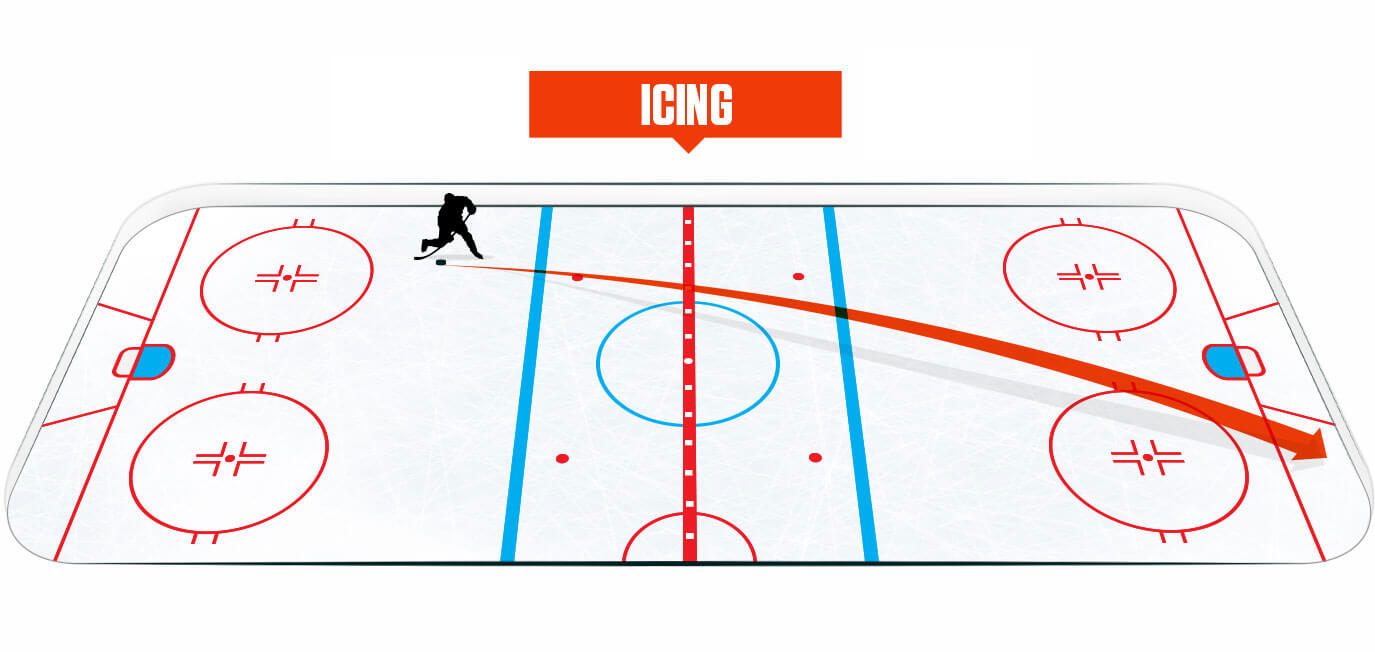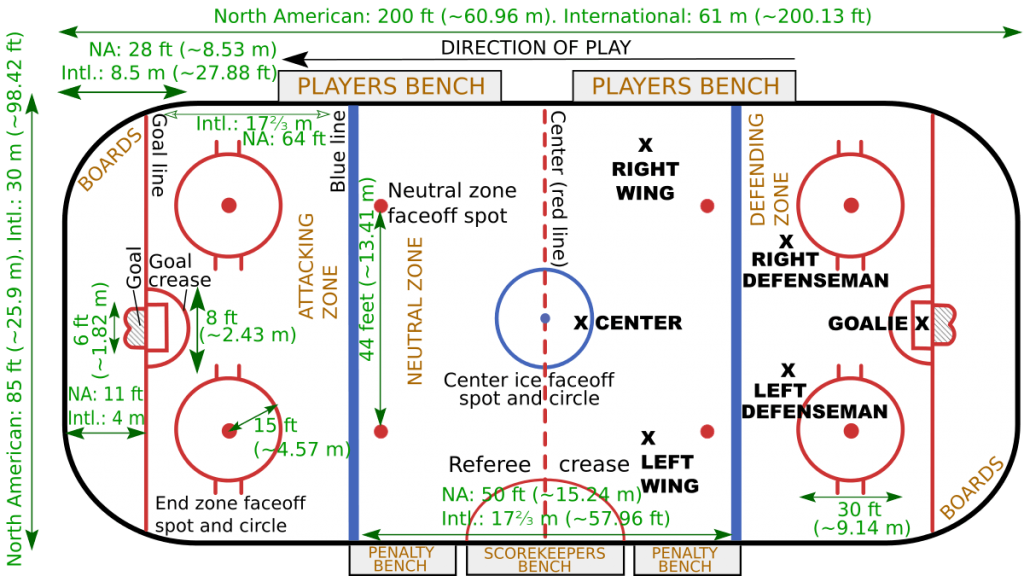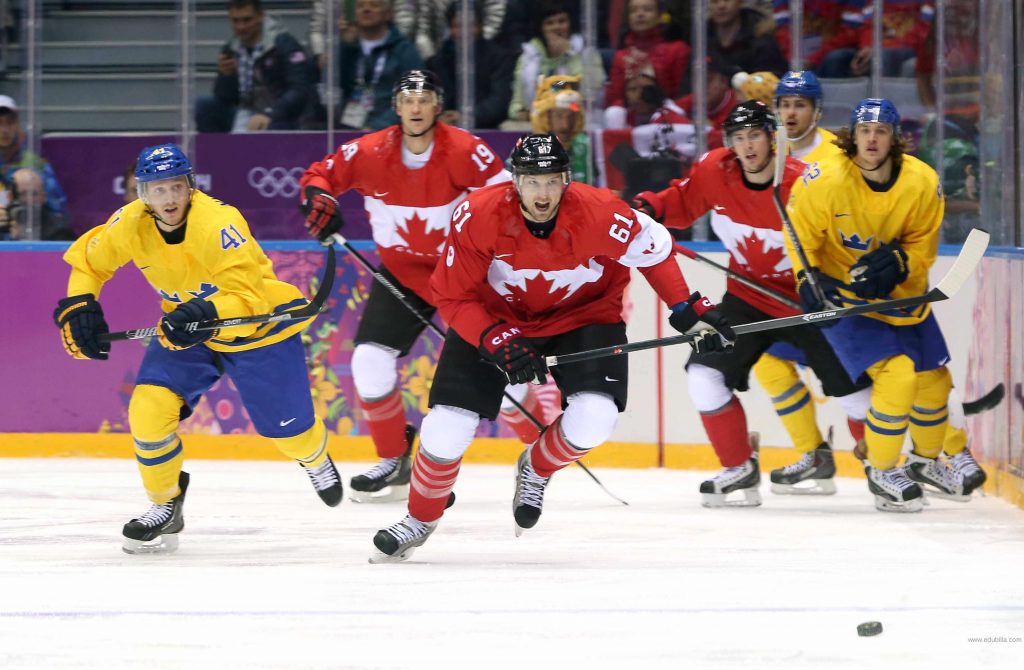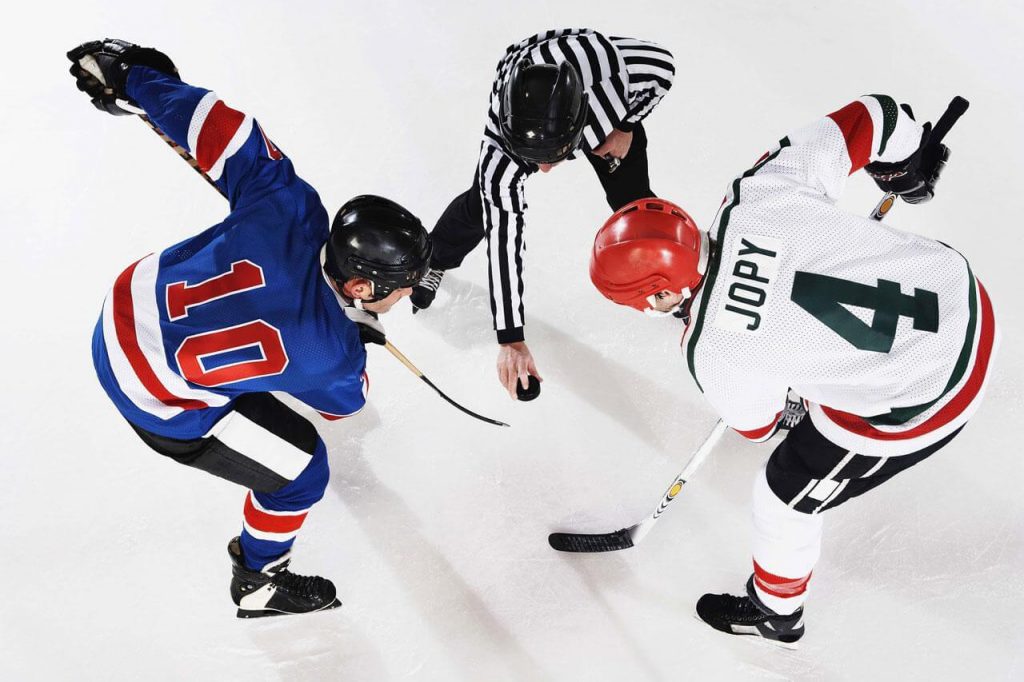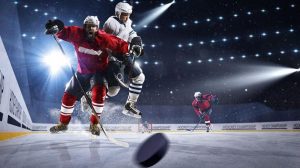ICE Hockey Dimensions
Icing is a violation in the hockey. The icing occurs when a player sends the puck over the red line (centerline) and also passes through the opposition’s goal line, with no player touching the puck. There are several additions and complications to this rule in different leagues and formats.
The sport Hockey generally a team sport played with 6 a side on an ice rink where each team tries to score a goal against the opposing team. To know the concept of Icing, we need to understand the rules, regulations, equipment and dimensions of the game.
What is Icing in Hockey: The sport Hockey defines two sports- one is ice hockey and the other one is field hockey. The sport which we are talking about is Ice Hockey. This sport is more popular in Canada, Russia, eastern and central Europe and the United States. Ice hockey is simply known as Hockey in the above-mentioned countries and states. Ice hockey is used in places where field hockey is more often used as hockey. The governing body for International Ice Hockey is the International Ice Hockey Federation (IIHF), which manages international tournaments and maintains the IIHF world ranking.
The game is played between two teams on an ice rink with sticks and a puck with an aim to score goals by sending the puck inside opposition’s net. The hockey stick consists of a long, little wide and slightly curved blade attached to a shaft and a puck is made of solid and vulcanized rubber of a flat and round shape. It is a full paced and physical game where each team consists of one goaltender and five skaters. Latter includes two defense men and three forwards. Forwards include one center and two wingers: a right-wing and a left-wing.
# Ice Hockey Dimensions (Field Size & Goal Post):
The icing which is an infraction occurs when a player shoots the puck over the center red line and the opposition’s goal line with the puck remains unchanged. When it occurs, a linesman stops play. Play resumes with a faceoff in the defending zone of the team that committed the infraction. To know this rule in detail one needs to understand the dimension of the game.
The ice hockey is played on an ice rink which is rectangular in shape with rounded corners and surrounded by a wall of around 40 inches. In the play area there consists of two goalposts, two goal lines, three thick lines and three zones. Out of three thick lines, there are two thick blue lines that divide the rink into three zones. These two lines are used to judge if a player is offside. The red line is the center-line where the play starts and it divides the rink into two equal parts. Near both ends of the rink there are two red thin lines which are called goal lines. Behind the blue lines of both sides, there are two big red circles with a radius of 4.5 meters having a dot in its center. These circles are known as the face-off circles and dots inside the circle are called faceoff spots wherein most face-offs take place.
Apart from these four face-off spots there are five others on the ground- four on the neutral zone of each side having two spots each on the respective sides and one on the center circle known as the center faceoff. This is a sport where a live area of play is extended behind the goal line round the corner. This is where the concept of change of direction of puck and icing comes into the frame.
# Ice Hockey Rules & Regulation
There are different Icing Rules & Regulation:
No Touch or Automatic Icing: No Touch or automatic icing occurs when a player shoots the puck from behind the center red line without touching any other player if it crosses the goal line. The linesman will blow the whistle and faceoff will take place on the defending zone of the team that committed this infraction.
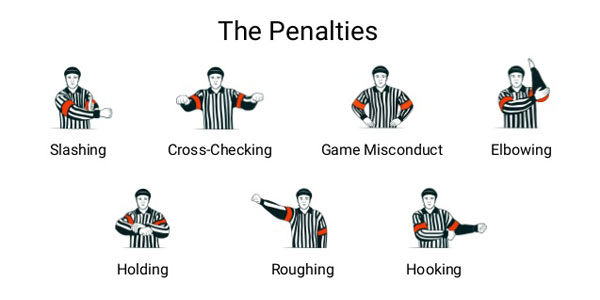
Touch Icing: Touch icing is a concept of first come first serve. If the opposite team’s player other than goaltender reaches first and touches the puck after it is been shot by the player from behind the center line then the referee will blow the whistle and call it as icing. The icing would be waived off if the puck is first touched by the goaltender or the players of the team that iced the puck. In simple words, icing is cancelled. This leads to high-speed races for the puck which often leads to injury.
National hockey leagues (NHL), American hockey leagues (AHL) and other European leagues used touch icing until 2012-13 season.
Hybrid Icing: The process would be the same as touch icing. The only difference will be the destination of players to reach. In touch icing, the players have to touch the puck first in order to avoid or win faceoff which leads to collision among each other and to the boards. In hybrid icing, play will be stopped immediately if the opposite team player reaches the faceoff dot first instead of skating down through goal line to touch the puck. But in some cases, if any team’s player couldn’t reach to the faceoff dot and the puck is shot around the board and comes out at the other end, then linesman has to watch out for the one who touched the puck first. If it is the opposite team’s skater then icing is called and if it is the same team player of the team that iced puck then icing is waved off and play continues.
IIHL, NHL, AHL, European Professional leagues, ECHL, CHL, NAHL play with the rule of Hybrid icing.
IIHL adopted hybrid icing as its rule from 2014 prior to which it adopted no-touch icing.
NHL started using hybrid icing as its rule from 2013-14 season. Till before this season touch icing was used.
Also Check: Ice Hockey Rules
# Exceptions to the Icing Rules:
- Icing is waived off if the team committed icing is shorthanded. Shorthand refers to having fewer skaters (less than 5) on the ice during play, as a result of the penalty.
- If a player of the same team which shoot the puck touches the puck before the opposite team’s skater touches the icing is waved off.
- If the goaltender leaves his goal crease and moves in the direction of the puck then it icing is waved off.
- If the puck enters the goal, then it is a goal rather than icing.
Get update yourself about ICE Hockey Field Size, Goal Post, Court, Rink Dimensions & Diagram


